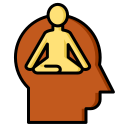Breathing Basics to Soothe the Nervous System
Inhale for four, hold for four, exhale for four, hold for four. Keep shoulders soft and jaw unclenched. Start with three rounds, then increase slowly. If the holds feel edgy, shorten them. Share your preferred count so others can experiment safely.
Breathing Basics to Soothe the Nervous System
Try four counts in, six counts out. Longer exhales engage the parasympathetic system and ease tension. Imagine breathing down the back of your body. Practice before meetings or bedtime. Notice how mood shifts afterward and comment with any surprising effects.



